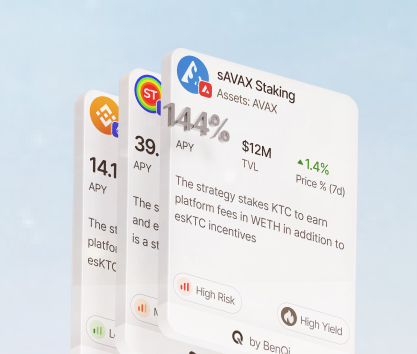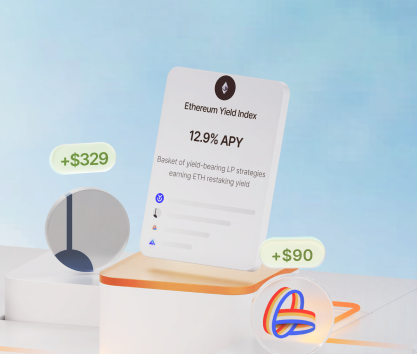Most discussions about the future of DeFi revolve around its core principle. Decentralization has many advantages. Many of them have been properly demonstrated by the growing DeFi sector, where protocols offer a wide range of services without being caught up in the intricacies of bureaucracy and regulations that bog down traditional centralized systems.
Using smart contracts in DeFi is why the trustless and permissionless environment works so well for millions of users worldwide. While scalability issues are still incredibly challenging for the sector, it is undeniable that blockchain technology and tiny autonomous applications (smart contracts) can be used to build tremendously complex ecosystems.
The current landscape of the DeFi sector is quite complicated, with over 11,000 protocols offering different types of financial products across 110 chains. Blockchain automation allows users to interact without any intermediaries. This setup increases the level of control individuals have over their finances through self-custody but creates new security issues. The trade-off seems fair to many crypto enthusiasts who want to avoid another instance of a global financial crisis.
What are smart contracts?
A smart contract is an autonomous application that operates on a certain blockchain and executes its instructions when predefined conditions are met. For instance, it can automatically create a transaction between two users when one of them wants to trade a certain amount of digital assets. Of course, operations can be more complex.
Here are some DeFi use cases:
- Lending is the oldest category of decentralized protocols offering financial products to their users. Lending platforms create smart contracts that manage pools where lenders can aggregate capital. These pools automatically choose interest rates and the minimum collateral requirements. Many protocols like Compound Finance, JustLend, and Aave do not need any human intervention and operate automatically.
- Liquid staking is a relatively new cohort of decentralized finance protocols that offer a fresh take on the idea of staking in PoS networks. Lido is the best example with its massive $17 billion TVL and close to $10.5 million in weekly fees. The protocol offers roughly 3% APY on Ethereum holdings and gives users stETH in exchange at a ratio of 1:0.95. All operations are fully automated and do not require any participation of intermediaries.
- Decentralized exchanges or DEXes are the bread and butter of the DeFi ecosystem. These protocols facilitate financial interactions within the sector. They are automated on multiple fronts. Smart contracts are used to manage liquidity pools and transactions between users. One of the most efficient and elegant designs is the one used by the UniSwap team. In fact, their DEX design has been copied many times. Pancakeswap is a direct copycat.
All these protocols are real-world DeFi examples that can be used by all crypto enthusiasts. The combined TVL of the sector is close to $94 billion. It is a notable contraction compared to the highs of 2022 and 2024. However, it is still a massive number indicating an intense interest from the community of investors in the concept of decentralization.
Advantages of using blockchain for finance
Decentralization is a great solution for many issues that make centralized financial systems cumbersome and unreliable. For starters, centralized systems are easily corrupted by individuals in charge of decision-making. One of the reasons Bitcoin popped into existence is the fear of the worldwide collapse of the monetary system due to the 2008 financial crisis.
The removal of intermediaries, bulky regulatory bodies, and other instances that can manipulate financial systems directly is the best way of dealing with inefficiencies of traditional markets and economies. However, the idea of decentralization had been a theory for a very long time. Only in 2008, the world able to accept the existence of a new monetary ecosystem.
We won’t talk about obvious benefits such as censorship resistance, user control over finances, lower costs, and transparency. Here are some advantages of monetization that require your attention:
- Innovation and programmability of contemporary blockchain systems make them incredibly potent in terms of rapid development. For instance, we are observing in real time how AI optimizes smart contract auditing, deployment, and development. Flexible agentic AI is used across the whole sector, with many protocols eagerly adopting new technologies.
- Resilience to inflation. The vast majority of cryptocurrencies are either inherently anti-inflationary or have the necessary mechanism to combat inflation. Bitcoin’s supply is limited to 21 million BTC, making it a scarce digital asset. Ethereum burns some tokens regularly to prevent the rapid increase of the circulating supply.
- Self-custody and total control over finances. Many libertarians and crypto enthusiasts believe that decentralization is great because it makes it impossible for any regulator or institution to control cash flows. Many users have more trust in their ability to take care of finances personally instead of allowing banks and investment funds to do it.
Note that many benefits of implementing DeFi solutions come from the individual responsibility of users to take better care of their assets. The role of educating users in addressing DeFi risk levels and teaching them how to interact with smart contracts safely is expanding with each passing year. In 2025, the number of unique wallets in the Ethereum ecosystem has grown to over 20 million, making it incredibly important to keep all investors aware of the dangers associated with DeFi.
DeFi security risks and other issues
Decentralization is extremely useful and efficient for many crypto enthusiasts. However, there are many problems with running an ecosystem that relies on automation to a degree where it is possible to lose everything due to a coding error.
Here are some critical issues that must be addressed by the crypto community:
- Smart contract vulnerabilities. These tiny applications may seem like something insignificant and simple. However, even programs with very limited functionality and several pages of code can be difficult to design in a way that allows for efficiency yet provides the necessary level of security to infuse users with confidence. Audits, better quality assurance practices, and other methods of increasing the robustness of code must be used by developers across the DeFi ecosystem.
- Insufficient interoperability. All conferences, meetups, and other get-togethers within the community of DeFi developers are focused on the importance of interoperability and the need to increase the number of usable cross-chain smart contracts. However, the reality is that the DeFi ecosystem is still fragmented, with many users stuck with assets on certain chains without a clear way of moving them elsewhere.
- Regulation is desperately needed. While we do not need institutions and regulatory bodies messing around with the DeFi ecosystem and its rules, we need some forms of consumer protection, insurance, and other tools that will prevent fraud, reduce uncertainty, and allow for faster adoption. The impact of regulatory changes on smart contract adoption can be huge, but governments must act quickly and with caution.
The future of smart contracts
The growth of the DeFi ecosystem demonstrates that users are hugely interested in using these novel tools, allowing them to take control over their finances and investment activities. We can expect that the technology will continue evolving.
You can already invest in thousands of different decentralized protocols. Making a correct investment decision when you can put your money into thousands of pools is a difficult task even for veterans.
We invite you to take a closer look at Rivo and its Yield Marketplace, where users can select expert-picked strategies that correspond with their preferences, risk styles, and capital limitations. All strategies are categorized and can be ranked by the level of risk, potential profitability, recent performance, and other metrics! Make your portfolio stronger with the help of Rivo!









